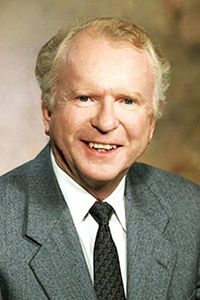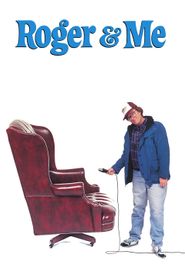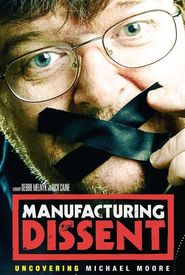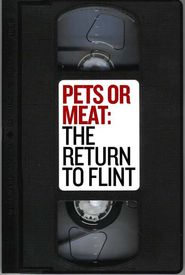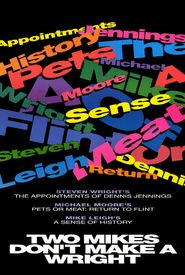Rodger B. Smith was born in Columbus, Ohio on July 12, 1925. He earned a bachelor's degree in business administration at the University of Michigan in 1947 and his MBA at the University of Michigan's Ross School of Business in 1953. He served in the United States Navy from 1944 to 1946.
Smith began his career at General Motors (GM) in 1949 as an accounting clerk, and had become the company's treasurer by 1970, and vice president the following year. In 1974, Smith was elected executive vice president in charge of the financial, public relations, and government relations staffs. He ascended to chairman of GM in 1981.
When Smith took over GM, it was reeling from its first annual loss since the early 1920s. Its reputation had been tarnished by civil and personal injury lawsuits, persistent quality problems with its manufactured vehicles, bad labor relations, public protests over the installation of Chevrolet engines in Oldsmobiles, and by a poorly designed diesel engine. GM was also losing its market share to foreign automakers for the first time.
Deciding that GM to needed completely change its structure and culture in order to remain competitive into the future, Smith instituted several initiatives that included forming strategic joint ventures with Japanese and South Korean automakers, launching the Saturn division, investing heavily in technological automation and robotics, and attempting to rid the company of its risk-averse bureaucracy. However, Smith's far-reaching goals proved too ambitious and overwhelming to be implemented effectively in the face of the company's resilient corporate culture and bureaucracy.
Despite Smith's vision for a new and better GM corporation, he was unable to successfully integrate GM's major acquisitions, several of which also failed to tackle the root causes of GM's fundamental problems. Smith began the reorganization of GM that would define his chairmanship with the 1981 creation of the worldwide Truck and Bus Group, consolidating the design, manufacture, sales, and service of all trucks, buses, and vans under one umbrella.
In 1982, Smith negotiated contract concessions with the United Auto Workers and cut planned raises for white-collar workers. After unveiling a more generous bonus program for top executives that provoked an angry response from the union, Smith was forced to back-pedal. Relations with the UAW, management, and stockholders remained strained. Profits improved in 1983 and Smith began unveiling his vision for reorganization, diversification, and "re-industrialization." As a result, many of the auto-making factories in the USA began to close down starting with the Los Angeles South Gate assembly plant that same year.
Smith took on the massive GM bureaucracy with disastrous results. A search change in how GM would market and build cars in the future, the 1984 reorganization was intended to streamline the process and create greater efficiencies; the reverse actually occurred. Combining the nameplate divisions, Fisher Body, and GM Assembly into two groups, C-P-C (Chevrolet, Pontiac, Canada) to build small cars and B-O-C (Buick, Oldsmobile, Cadillac) to build large cars, the effort was subsequently criticized for creating chaos within the company. Longstanding informal relationships that greased the wheels of GM were severed, seemingly overnight, leading to confusion and slipping new product programs.
The reorganization virtually stopped GM in its tracks for 18 months, and never really worked as intended, with the CPC division building Cadillacs and BOC building Pontiacs. The reorganization added costs and created more layers of bureaucracy when the new groups added management, marketing, and engineering staff, duplicating existing staff at both the corporate and division levels. Almost ten years elapsed before the 1984 reorganization was unwound and all car groups were combined into one division.
Smith's major new car program prior to the 1984 reorganization, GM10 (also known as W-body),has been called "The biggest catastrophe in American industrial history." Beginning in 1982, and costing $7 billion, the plan was to replace all mid-size cars produced by Chevrolet, Pontiac, Oldsmobile, and Buick. The plan was huge in scope, calling for seven plants that would each assemble 250,000 of the cars, or 21% of the total U.S. car market. It was badly executed from the start, but the 1984 reorganization wrought havoc on the program and it never recovered. By 1989, the year before the last of the GM10s were launched, GM was losing $2,000 on every one of the cars it produced.
A defining theme of Smith's tenure was his vision to modernize GM using advanced technology. Some have suggested he was ahead of his time in attempting to create a 21st-century organization in a company not ready for the technology. "Lights out" factories were envisioned, where the only employees were those supervising the robots and computers. This was obviously viewed negatively by the unions, and further strained relations. Over
